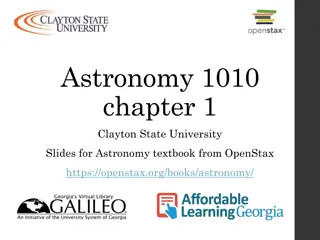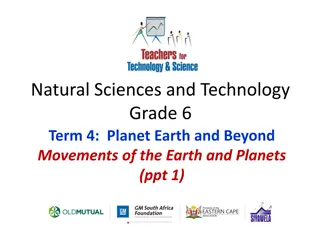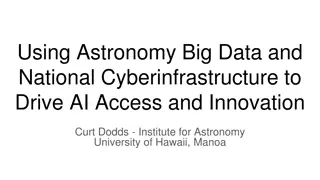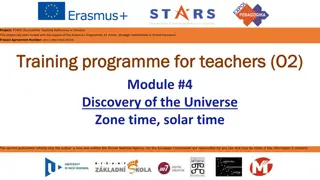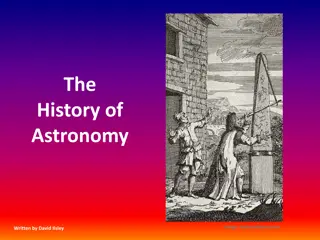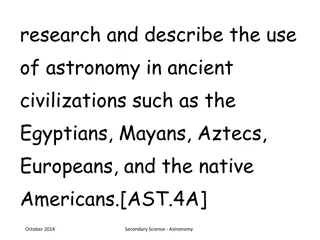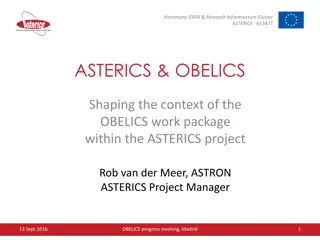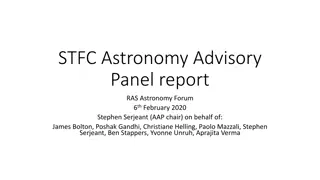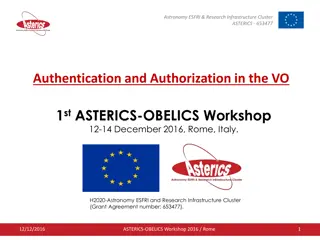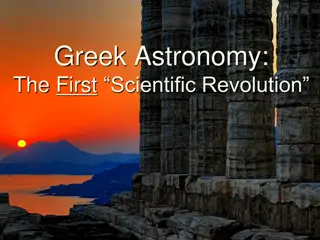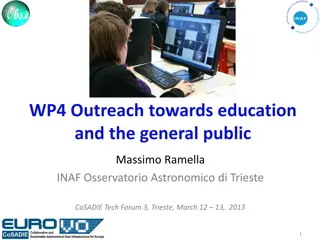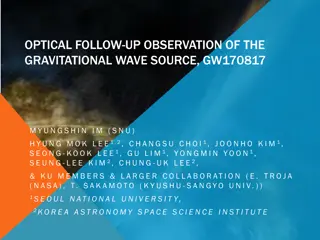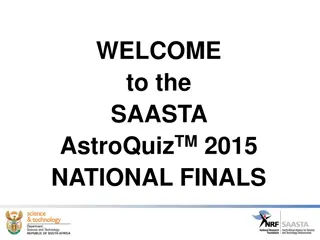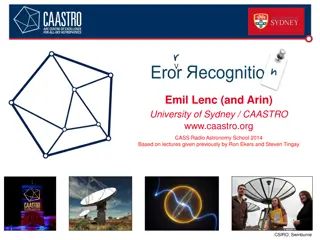Historical Development of Astronomy in Grade 7 Natural Sciences
Explore the historical development of astronomy with renowned figures like Nicolaus Copernicus, Galileo Galilei, and Johannes Kepler. Discover key advancements in our understanding of the solar system and beyond, including the heliocentric model, telescopic observations, and planetary movement laws.
Download Presentation

Please find below an Image/Link to download the presentation.
The content on the website is provided AS IS for your information and personal use only. It may not be sold, licensed, or shared on other websites without obtaining consent from the author.If you encounter any issues during the download, it is possible that the publisher has removed the file from their server.
You are allowed to download the files provided on this website for personal or commercial use, subject to the condition that they are used lawfully. All files are the property of their respective owners.
The content on the website is provided AS IS for your information and personal use only. It may not be sold, licensed, or shared on other websites without obtaining consent from the author.
E N D
Presentation Transcript
Natural Sciences Grade 7 Term 4: Planet Earth and Beyond Historical development of astronomy (ppt 2)
Topic 3 Historical development of astronomy Modern developments Natural Sciences - Grade 7
Guess what this is Natural Sciences - Grade 7
Nicolaus Copernicus [1473 1543] Renaissance scientist. In 1514 he claimed that the Earth revolves around the Sun. Scientists and religious uproars started. In 1543 he used Maths geometrical techniques when he discussed the following about his heliocentric model: - Earth s centre is not the Universe s centre. - Stars do not move. - Every planet rotates around the Sun. - Celestial bodies do not all revolve around a single point. - The motion of the Earth causes the Sun to move. Natural Sciences - Grade 7
Galileo Galilei [1564 1642] He used science to gain more information about the solar system. He was not the inventor of the telescope, but he was the first scientist who directed it to the sky. He used it to study the planets and the stars. He discovered the Milky Way and saw that it was made up of millions of stars; Jupiter s four biggest moons. After he had constructed an improved 20x refractor telescope; Venus went through phases that was similar to lunar phases. Natural Sciences - Grade 7
Galileo Galilei [1564 1642] He observed and explained sunspots. The stars were all at different distances from the Earth. When he observed the Moon, he discovered that it had valleys, craters and mountains. He is named the father of observational astronomy. He spent his life under house arrest due to heresy. He is the author of Two New Sciences [presently it is called Kinematics and strength of materials]. Natural Sciences - Grade 7
The Orion Constellation Galileo Galilei viewed the Pleiades [also known as the Seven Sisters and Messier 45] through a telescope. He discovered that it is an open star cluster in a constellation. Natural Sciences - Grade 7
Johannes Kepler [1571 1630] He was a German Mathematician. He observed Mars orbit. He formulated the laws of the planets movement in 1609. He discovered that all the planets moved in elliptical [oval shaped] orbits. He made a suggestion that Galileo s telescope work could be used to confirm the theory of Nicolaus Copernicus. There was no distinction between astrology and astronomy in his time. Natural Sciences - Grade 7
Isaac Newton [1642 1727] His gravity law was a very important discovery. He explained how gravity kept: - the Earth in its orbit around the Sun. - the Moon in its orbit around the Earth. - objects in the solar system to keep their positions to the Sun. It started when he noticed an apple falling from a tree; all objects with mass attract each other. Natural Sciences - Grade 7
Isaac Newton [1642 1727] In 1666, at the age of 25, he discovered that when white light passes through a prism, it spreads out into a spectrum of seven colours. The gravity force between two objects become smaller as the distance between the two objects become bigger. He published a famous article called Principia in 1687 in which calculations were shown that Nicolaus Copernicus was correct. The Law of Gravitation is universal [planets, stars, galaxies and Moon movements can be predicted by this law]. Natural Sciences - Grade 7
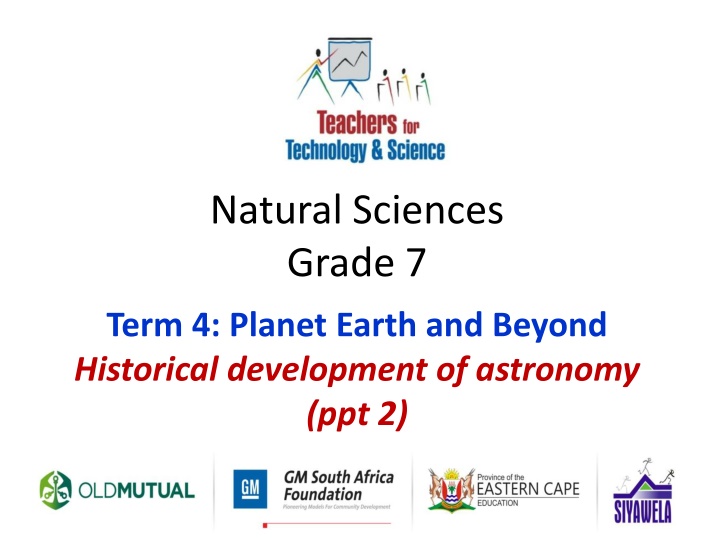

![READ⚡[PDF]✔ The Earth in Context: A Guide to the Solar System (Springer-Praxis S](/thumb/21508/read-pdf-the-earth-in-context-a-guide-to-the-solar-system-springer-praxis-s.jpg)
